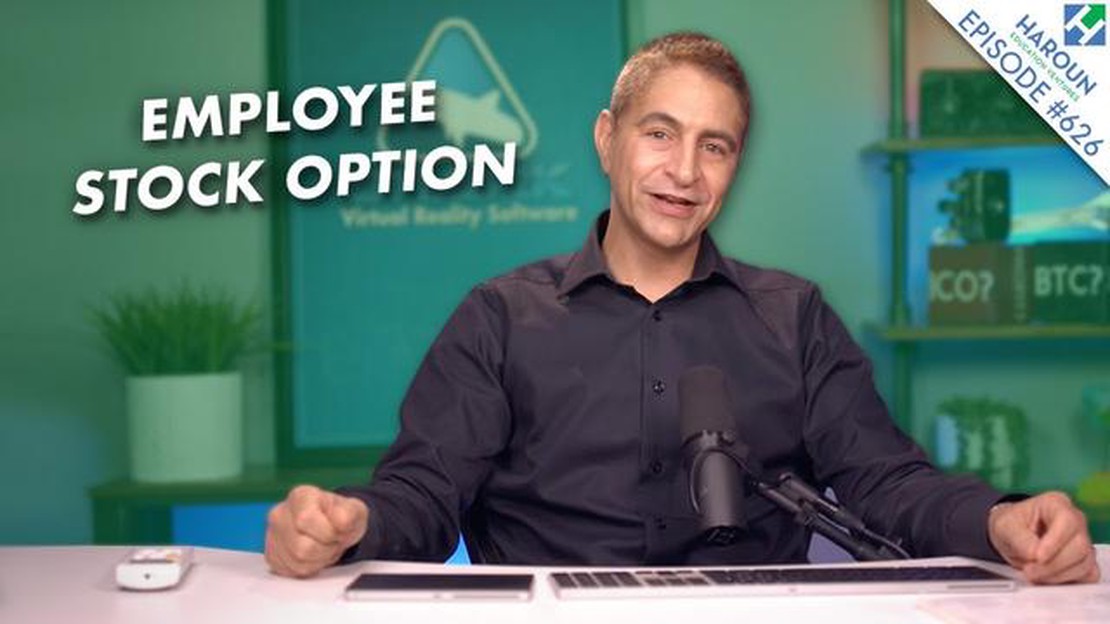Understanding the 5 Year Rule for Backdoor Roth IRAs
The 5 Year Rule for Backdoor Roth IRAs When it comes to retirement planning, maximizing your savings is essential. One strategy that many high-income …
Read Article
Employee Stock Option Plans (ESOPs) have become an increasingly popular form of compensation for employees. ESOPs give employees the opportunity to own a stake in the company they work for, allowing them to benefit from the company’s growth and success. One of the key components of an ESOP is the option pricing model, which determines the value of the options granted to employees.
The option pricing model is a complex mathematical formula that takes into account various factors, such as the current stock price, the expected volatility of the stock, the time until the options expire, and the risk-free interest rate. By using this model, companies can determine the fair value of the options and ensure that they are granting employees a fair and equitable amount of stock options.
Understanding the option pricing model is crucial for both companies and employees. For companies, it allows them to accurately estimate the value of the options and properly account for them on their financial statements. For employees, it helps them understand the potential value of their stock options and make informed decisions about their compensation package.
This comprehensive guide will dive deep into the option pricing model for ESOPs, explaining each component of the formula and providing practical examples. Whether you are a company looking to implement an ESOP or an employee wanting to understand the value of your stock options, this guide will equip you with the knowledge you need to make informed decisions.
When it comes to calculating the fair value of employee stock options (ESOP), the option pricing model plays a crucial role. This model takes into account several key components that impact the value of the options.
 5. Dividend Yield: If the company pays dividends, the dividend yield is considered in the option pricing model calculation. A higher dividend yield decreases the value of the options.
6. Volatility: Volatility measures the fluctuation in the company’s stock price. Higher volatility increases the value of the options, as it provides employees with a greater chance of profiting from stock price movements.
7. Expected Employee Exercise Behavior: The expected employee exercise behavior considers the likelihood of employees exercising their options before they expire. Depending on the expected behavior, adjustments may be made to the option pricing model.
5. Dividend Yield: If the company pays dividends, the dividend yield is considered in the option pricing model calculation. A higher dividend yield decreases the value of the options.
6. Volatility: Volatility measures the fluctuation in the company’s stock price. Higher volatility increases the value of the options, as it provides employees with a greater chance of profiting from stock price movements.
7. Expected Employee Exercise Behavior: The expected employee exercise behavior considers the likelihood of employees exercising their options before they expire. Depending on the expected behavior, adjustments may be made to the option pricing model.
| Component | Effect on Option Value |
|---|---|
| Stock Price | Positive |
| Exercise Price | Negative |
| Time to Expiration | Positive |
| Risk-Free Interest Rate | Negative |
| Dividend Yield | Negative |
| Volatility | Positive |
| Expected Employee Exercise Behavior | Varies |
By taking into account these key components, the option pricing model provides a way to fairly value employee stock options, helping both employers and employees make informed decisions regarding their compensation and ownership in the company.
Read Also: Step-by-step guide to deposit money into your forex card
The option pricing model for Employee Stock Option Plans (ESOP) is influenced by several key factors. These factors affect the value of the options granted to employees and play a crucial role in determining the fair market value of the options. Understanding these factors is essential for accurate valuation and effective implementation of ESOPs.
Read Also: Understanding Premium and Discount Zones in Forex Trading2. Exercise Price: The exercise price is the price at which employees can purchase the company’s stock when exercising their options. Typically, this price is set at a discount to the current market price. The exercise price directly impacts the value of the options, as a lower exercise price increases the potential for higher gains for employees. 3. Time to Expiration: The time remaining until the options expire is an important consideration in the option pricing model. As the expiration date approaches, the value of the options decreases. This is due to the diminishing time value of money and the increasing uncertainty regarding the future stock price. 4. Volatility: The volatility of the company’s stock price plays a significant role in option pricing. Higher volatility leads to greater potential price swings, which increases the value of the options. In contrast, lower volatility reduces the potential for large gains, resulting in lower option values. 5. Risk-free Rate: The risk-free rate of return, such as the interest rate on government bonds, is a crucial factor in the option pricing model. It represents the return that could be earned by investing in a risk-free asset. As the risk-free rate increases, the value of the options decreases, as the potential for higher returns in alternative investments reduces the value of the option. 6. Dividends: The presence or absence of dividends affects the option pricing model. Dividends decrease the value of options, as they reduce the cash flow to shareholders and therefore decrease the value that employees can potentially receive from exercising their options.
In conclusion, the option pricing model for ESOP is influenced by several factors, including stock price, exercise price, time to expiration, volatility, risk-free rate, and dividends. These factors must be carefully considered and accurately modeled to determine the fair market value of the options and ensure the successful implementation of ESOPs.
ESOP stands for Employee Stock Ownership Plan. It is a type of employee benefit plan that allows employees to become owners of company stock.
The Option Pricing Model for ESOP is a mathematical model used to determine the fair value of stock options granted to employees. It takes into account various factors such as the current stock price, the exercise price, the time to expiration, the volatility of the stock, and the risk-free interest rate.
There are several factors that affect the fair value of stock options, including the current stock price, the exercise price, the time to expiration, the volatility of the stock, and the risk-free interest rate. Additionally, any changes in these factors can also impact the fair value of the options.
Understanding the Option Pricing Model for ESOP is important for both employees and employers. For employees, it helps them understand the value of the stock options they receive as part of their compensation package. For employers, it helps them determine the fair value of the options and make informed decisions about granting stock options to employees.
Yes, there are some limitations to the Option Pricing Model for ESOP. It is based on certain assumptions, such as the stock price following a log-normal distribution and the absence of dividends. Additionally, it may not take into account all relevant factors that could impact the value of the stock options.
ESOP stands for Employee Stock Ownership Plan. It is a type of employee benefit plan that allows employees to become owners of a company through the allocation of stock.
The option pricing model for ESOP is based on several factors, including the current stock price, the strike price of the options, the time to expiration of the options, the volatility of the stock price, and the risk-free rate of interest. The model calculates the fair value of the options, which can then be used to determine the fair market value of the ESOP.
The 5 Year Rule for Backdoor Roth IRAs When it comes to retirement planning, maximizing your savings is essential. One strategy that many high-income …
Read ArticleUnderstanding MT4 TimezoneMetaTrader 4 (MT4) is one of the most popular trading platforms used by traders worldwide. It provides a user-friendly …
Read ArticleForex Market Opening Times in GMT Forex markets, or foreign exchange markets, are open 24 hours a day, 5 days a week. This means that trading in forex …
Read ArticleLearn How to Study Forex and Become a Successful Trader Whether you are a beginner or an experienced trader, studying Forex is essential to success in …
Read ArticleExchange Danish Kroner for Euros: Best Places to Convert Currency The Danish kroner is the official currency of Denmark, Greenland, and the Faroe …
Read ArticleGuide to Buying Wheat Options When it comes to trading options, wheat can be a highly lucrative commodity. Whether you’re a seasoned trader or just …
Read Article